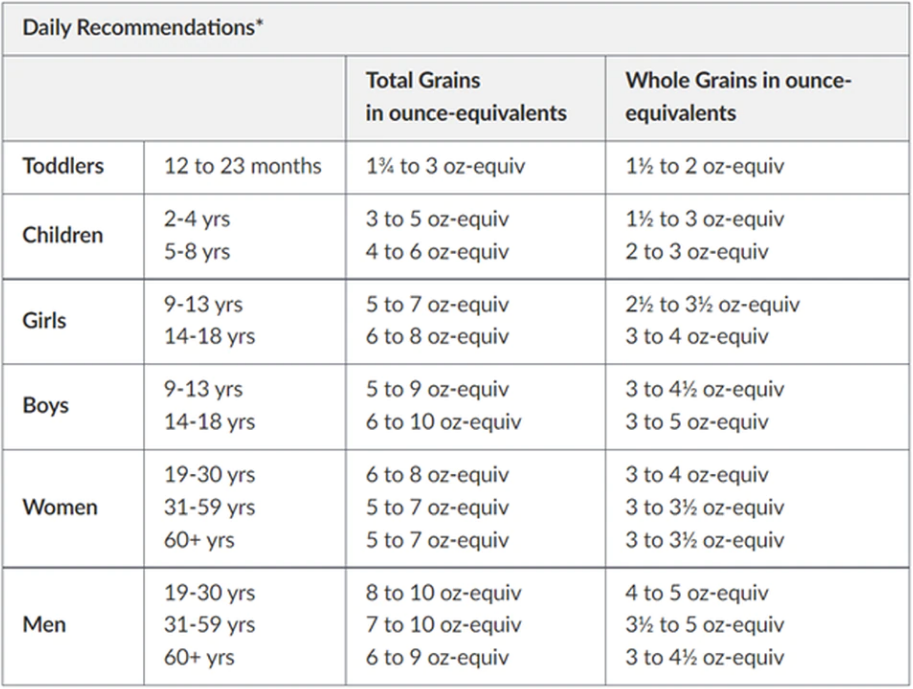Mar 21, 2022 Welcome back to UHC’s House Call on WDTV. In Part III of our five part Nutrition Month series, Olivia Kinkade, a member of the clinical nutrition department at UHC, joins us to talk about focusing on making half of your grains whole grains.
1. What foods are in the Grains Group?
Foods in the Grains Group are any food made from wheat, rice, oats, cornmeal, barley, or another cereal grain is a grain product. Bread, pasta, breakfast cereals, grits, and tortillas are examples of grain products. Foods such as popcorn, rice, and oatmeal are also included in the Grains Group. Grains are divided into 2 subgroups: Whole Grains and Refined Grains. Whole grains contain the entire grain kernel ― the bran, germ, and endosperm. Examples of whole grains include whole-wheat flour, bulgur (cracked wheat), oatmeal, whole grain cornmeal, and brown rice. Refined grains have been milled, a process that removes the bran and germ. This is done to give grains a finer texture and improve their shelf life, but it also removes dietary fiber, iron, and many B vitamins. Some examples of refined grain products are white flour, corn grits, white bread, and white rice. Refined grain choices should be enriched. This means certain B vitamins (thiamin, riboflavin, niacin, folic acid) and iron are added back after processing. Fiber is not added back to enriched grains. Check the ingredient list on refined grain products to make sure that the word “enriched” is included in the grain name. Some food products are made from mixtures of whole grains and refined grains. Only foods that are made with 100% whole grains are considered a whole grain food.2. Why is it important to eat grains, especially whole grains?
Eating grains, especially whole grains, provides health benefits. People who eat whole grains as part of a healthy diet have a reduced risk of some chronic diseases. Grains provide many nutrients that are vital for the health and maintenance of our bodies.Grain Nutrients:
- Grains are important sources of many nutrients, including complex carbohydrates, dietary fiber, several B vitamins (thiamin, riboflavin, niacin, and folate), and minerals (iron, magnesium, and selenium).
- Dietary fiber from whole grains or other foods, may help reduce blood cholesterol levels and may lower risk of heart disease. Fiber is also important for proper bowel function.
- The B vitamins thiamin, riboflavin, and niacin play a role in metabolism—as these help the body release energy from protein, fat, and carbohydrates. B vitamins are also essential for healthy nervous system. Many refined grains are enriched with these B vitamins.
- Iron is used to carry oxygen in the blood. Many teenage girls and women in their childbearing years have iron-deficiency anemia. They should eat foods high in heme-iron (meats) or eat other iron containing foods along with foods rich in vitamin C, which can improve absorption of non-heme iron. Fortified whole and refined grain products, including many ready-to-eat cereals, are major sources of non-heme iron in American diets.
- Whole grains are sources of magnesium and selenium. Magnesium is a mineral used in building bones and replacing energy from muscles. Selenium protects cells from oxidation. It is also important for a healthy immune system.
3. How many grain foods are needed daily and what counts as an ounce-equivalent of grains?
The amount of grains you need to eat depends on your age, sex, height, weight, and level of physical activity. For women, the amount can also depend on whether you are pregnant or breastfeeding. Most Americans eat enough total grain foods, but few eat enough whole grains. At least half of the grains you eat should be whole grains. In general, 1 slice of bread, 1 cup of ready-to-eat cereal, or ½ cup of cooked rice, cooked pasta, or cooked cereal can be considered as 1 ounce-equivalent from the Grains Group. The table in this video provides specific amounts that count as 1 ounce-equivalent of grains towards your daily recommended intake. In some cases the number of ounce-equivalents for common portions are also shown. grains(myplate.gov)
grains(myplate.gov)
This content was originally posted on the WDTV News website here.
Please note, the information provided throughout this site is not intended or implied to be a substitute for professional medical advice, diagnosis or treatment. All content, including text, graphics, images, and video, on or available through this website is for general information purposes only. If you are experiencing related symptoms, please visit your doctor or call 9-1-1 in an emergency.